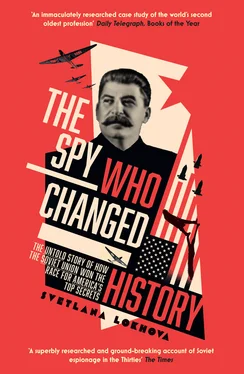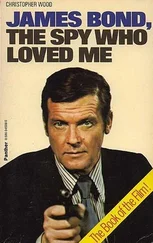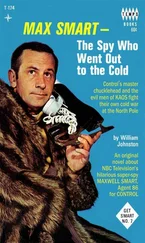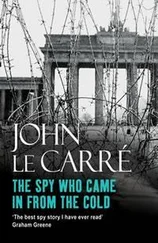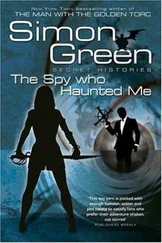As a member of the gentry, Shumovsky’s father Adam was entitled to patronage. For his four sons that privilege meant they could attend the Gymnasium in Kharkov. 9Its curriculum encompassed a view of the world that included modern science, Shumovsky’s passion. Less fortunate children growing up in the city at the same time managed, like the overwhelming majority of the Emperor’s 125 million subjects, perhaps three brief years in a church charity school 10where the priests reinforced the principles of autocracy, unquestioning loyalty to God and His representative on earth, the Tsar. At Shumovsky’s school, the teachers explaining the miracle of powered flight only increased his desire to see the sight for himself.
The annual International Trade Fair was the one time of year when the inventions and curiosities of the world were brought to the excited citizens of Kharkov. Like the country, the city was in the midst of massive social transformation. Kharkov was proud of its place at the forefront of developments and firmly part of a new Russia. Like its rival, the then capital city of St Petersburg, it was a window through which Russia looked to the West, to Europe. In contrast with provincial Moscow and Kiev, which were far more traditional, religious and backward, Kharkov embraced progressive thought and modern inventions. Blessed with a wealth of natural resources such as coal, iron ore and grain, the city was newly affluent. Sitting in the centre of the rich black soil of the Ukrainian plains and with an enormous new railway station, Kharkov was the leading transport hub and undisputed commercial centre of southern Russia. Shumovsky’s father’s job was to help regulate the numerous private sector banks that financed the ever-growing agricultural and mining enterprises. The city was a hive of steel-making and coal-mining, the epicentre of Russia’s Industrial Revolution. Almost 300 automobiles jostled to drive along the few paved roads, past the horse-drawn taxis and slow-moving peasant carts. 11
It should have been a wealthy and happy place. It wasn’t; indeed, it was impossible to live in the sprawling city and remain unmoved by the inequality and social division which were the result of its rapid economic expansion. Shumovsky saw the evidence each day on his way to school as he passed the dispossessed peasants sleeping rough on the street. While Kharkov’s grain found its way to the hungry cities of Western Europe, few enjoyed the profits that trickled back. The arrival of modern factories, steelworks and locomotive manufacturers had brought home to the city the issues and problems associated with Russia’s rapid industrialisation. Government policy had been to finance this enormous investment through heavy taxes on peasants, forcing millions to work unwillingly in towns. Armed police, Cossacks and the army ruthlessly suppressed the many protests. Each spring thousands wandered hungrily into the city, vainly searching for a way to improve their lot and the lives of their families back in their home villages. These new peasant workers trailed miserably into the foreign-owned factories, exchanging one form of slavery for another. As Shumovsky would later remember, ‘Most industrial enterprises, in fact, were under foreign control. In my home city, for example, the gas business was run by a Belgian company, the tramways by a French company, a big plant for producing agricultural machinery by a German company, and so on.’ 12
Russian industrial workers were not only the lowest paid in Europe but struggled under a burden of often unfair and inhumane practices. On his way to school, Shumovsky would pass children his own age heading to a long day at work. fn6Workers only had to be paid in cash once a month; the rest of their wages were returned to the factory owners’ pockets by a voucher system, requiring the employees to pay their rent and buy overpriced goods in the company stores. Russian industrial labourers worked eleven-hour days, although shifts often exceeded this, in conditions that were unsafe and unhygienic. Kharkov’s population had increased and housing conditions were awful – it was no surprise that the city would soon become a hotbed of radicalism and politically motivated strikes. The official reaction to even mild protest was confrontational and violent.
Kharkov bore the vivid scars of the 1905 Revolution and the Tsar’s broken promises. The large locomotive works where Ivan Trashutin (one of the students who would travel with Shumovsky to the US) was later employed had been extensively damaged by fierce artillery shelling at the climax of official efforts to dislodge its striking unarmed workers. 13The revolution began after the army and police shot dead 4,000 peaceful protesters in St Petersburg who were taking a simple petition to the Russian Emperor asking for improved working conditions and universal suffrage. 14The peaceful demonstration was organised and led by an agent of the Tsar’s secret police, the feared Okhranka, in one of the agent provocateur missions for which it was renowned. fn7
In revulsion, the whole country rose in revolt at the lack of any reaction to or remorse for this bloodshed on the part of Tsar Nicholas II. Joseph Stalin’s close friend Artyom (Stalin later adopted his son) set Kharkov alight with months of army mu-tinies and strikes. Barricades were set up on the main street, and there was armed insurrection. Large-scale street fighting broke out between the citizens demanding a voice and the paramilitary Cossacks. Across Russia’s cities an alliance of radical students, workers and the peasants brought the autocracy almost to its knees. Shumovsky learned that secondary school children played their part by cooking up sulphur dioxide bombs in the chemistry laboratory. The schools and the universities were proud to be the headquarters of revolutionaries. Tsar Nicholas eventually caved in to the people, offering great concessions and even promising a Duma, a parliament, but as soon as the strikes ended, he went back on his word. The people felt betrayed by their Tsar. Each year as Shumovsky was growing up, there were demonstrations in Kharkov under the slogan ‘We no longer have a Tsar’, commemorating the deaths of the 15,000 hanged for their part in the countrywide protests.
The Russian middle class, including the Shumovskys, became alienated from their government. They witnessed the shocking, violent crackdowns on peaceful protesters and the lamentable official failure to promote better social conditions. There was now a Duma for which men of property like Adam Shumovsky could vote, but in practice the Tsar was as autocratic as ever. The electoral laws were changed to exclude those considered to have been misled to vote for critical, radical parties and to promote and support conservatives, and the parliament was contemptuously referred to as a ‘Duma of Lackeys’. 15Although officially banned, discussions raged on in drawing rooms across the country about the latest scandals of the court faith healer Rasputin and the not-so-clandestine involvement of the Okhranka in terrorist activities, including assassinations and bombings. 16
As Tsar Nicholas implacably set his face against change, opposition politics and debate moved ever further leftwards in search of radical alternatives. The certainty of change promised by the Marxist dialectic appealed to the methodical minds of Kharkov’s citizens. In the face of an official policy of Russification, meanwhile, each of the empire’s nationalities increasingly aspired to independence. Russian Jews were subject to harsher discrimination. Official quotas to limit the number of Jewish students were re-imposed at schools and universities, and violent anti-Semites formed savage gangs known as the ‘Black Hundreds’.
Despite the holiday atmosphere of the International Trade Fair of 1910, new waves of strikes had begun. Kharkov contained a dangerously rich cocktail of workers seething with resentment at the failure of the 1905 Revolution, a free-thinking professional class reading socialist literature smuggled in from abroad and a rebellious, radical student body. All that was lacking was the spark. The province remained restive and occasionally erupted into violence. Peasants who stayed in their villages felt excluded from the economy. Their fathers had been virtual slaves; now their sons had no future on the land. Gangs of dispossessed peasants roamed the countryside, burning manor houses and murdering landowners. The army tried to keep order by shooting bands of miscreants. Meanwhile, the urban radicals had learned their lesson after the recent betrayals; there would be no half-measures next time. The revolutionaries were more determined than before. During Shumovsky’s childhood, he would learn not just about flying, but of the tragic events in his country’s recent history such as the 1905 Bloody Sunday killings of unarmed demonstrators marching to the Winter Palace to present their petition to the Tsar and the 1912 Lena Goldfields Massacre, when Tsarist troops shot dead dozens of striking workers protesting about high prices in the company shops. 17Graphic postcards of dead bodies from the Lena massacre circulated, inflaming anti-government attitudes. In short, Russia was a country teetering on the brink of war with itself.
Читать дальше
